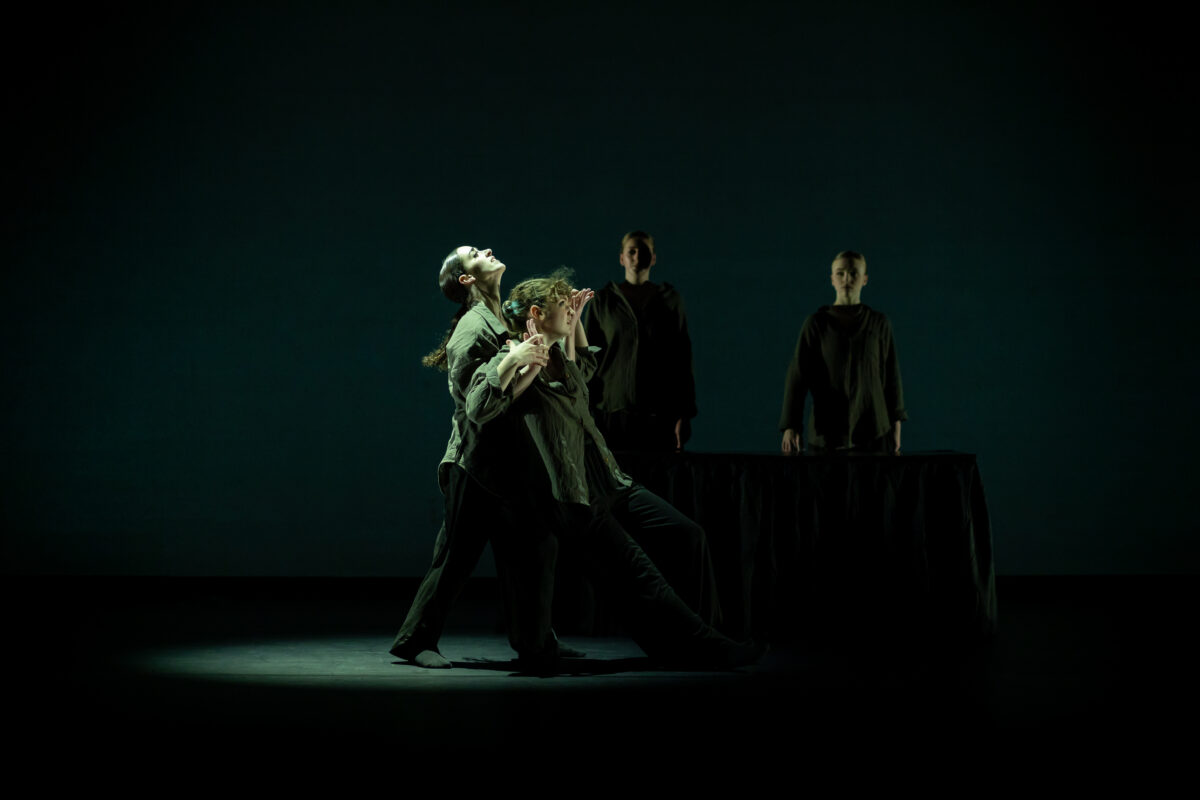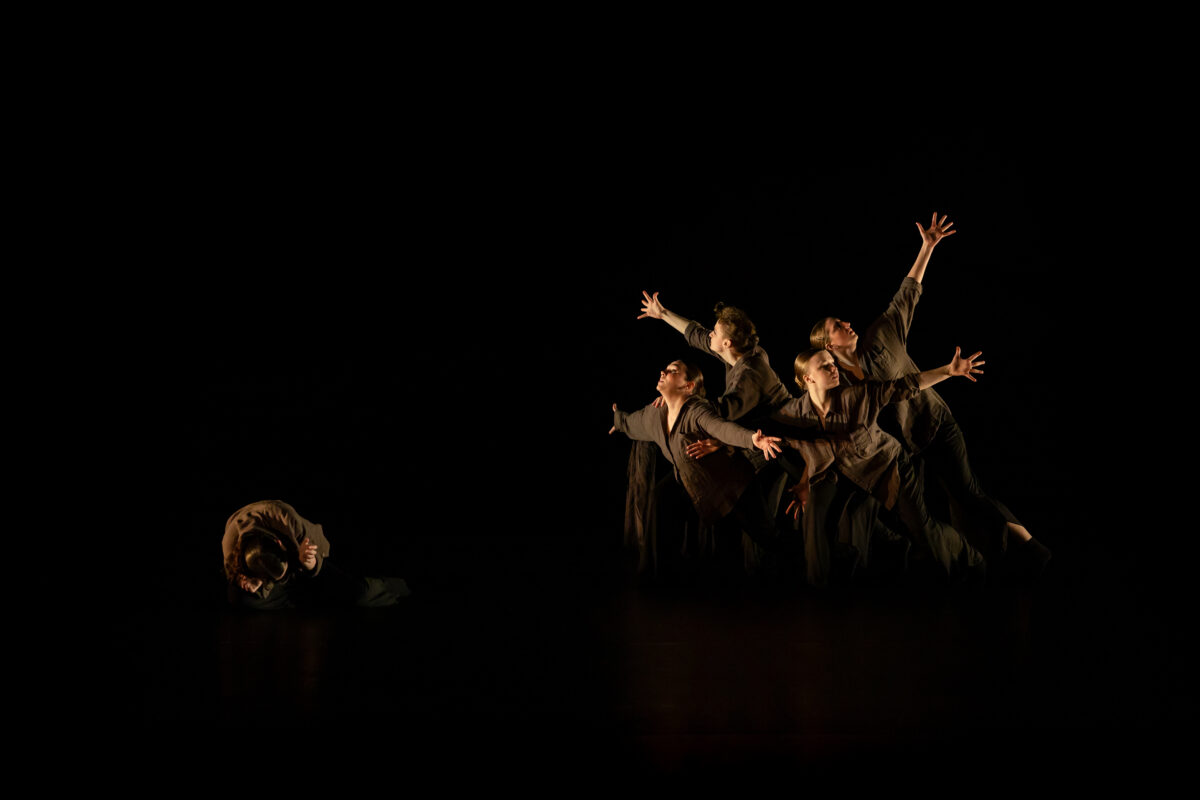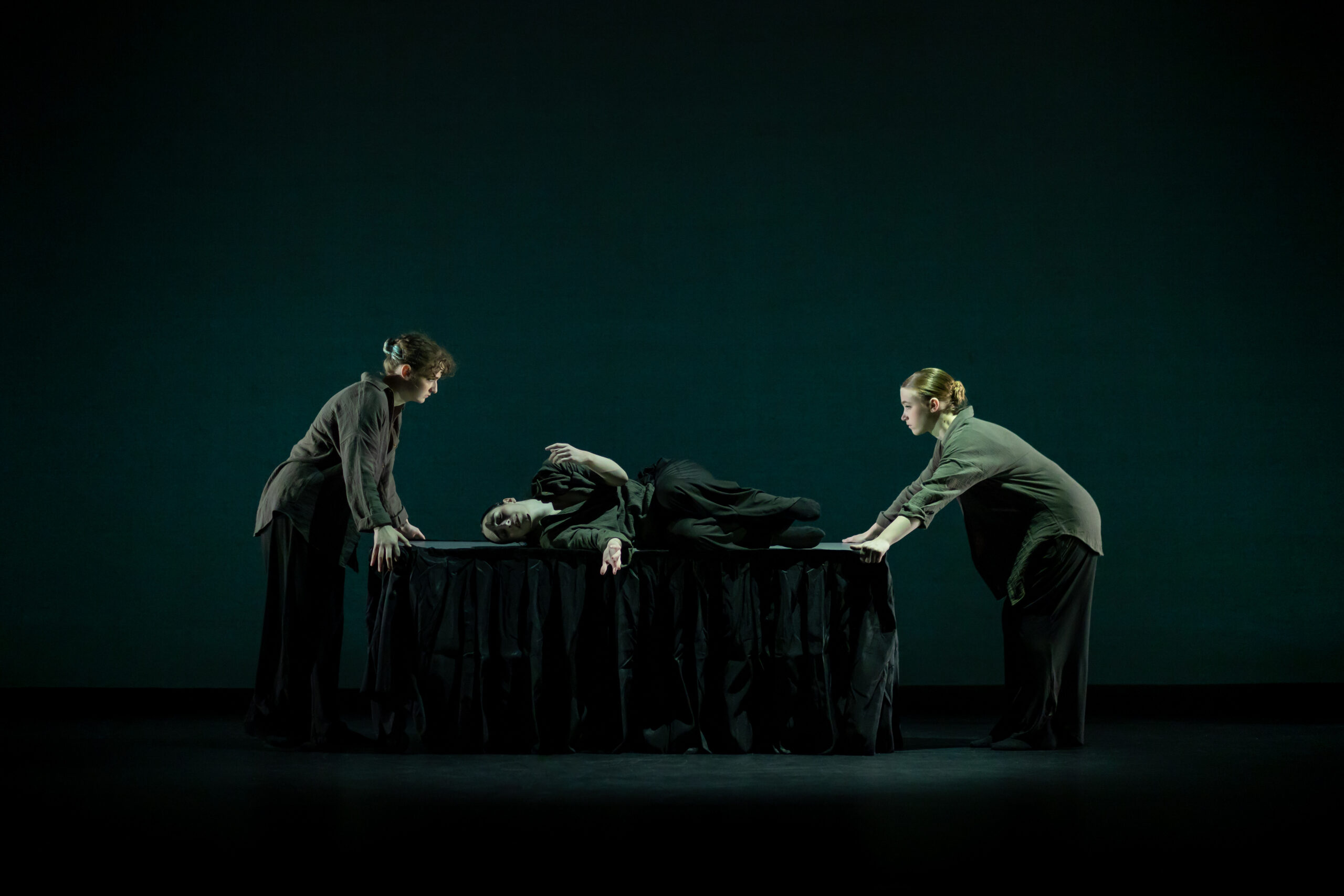University Communications and Marketing social media intern Allison John ’24, psychology, isn’t only interested in Instagram engagement and sharing campus treasures—she’s also passionate about the creative process that brings a dancer’s performance to life. After watching this year’s Fall Dance Showcase, John sat down with one of the senior choreographers to learn more about her art.
When you listen to a song, what immediately comes to your mind? Eva McLaughlin ’24, dance, said this is exactly the story of how her choreography comes to life.
Every senior dance major at UMBC is required to create or perform a final piece to graduate. Two to five student dancers will work with a choreographer to pick a variety of songs to tell a story of their choosing. For McLaughlin, when she hears a song, she immediately begins to imagine a story or sometimes a phrase, and from there, her process starts.
This year was different from others as her piece was centered around research she conducted as part of an Undergraduate Research Award (URA). McLaughlin’s research centered on misophonia, a neurological condition characterized by an intense aversion to certain auditory stimuli. The dance piece was created in order to pull the audience into the reality of people who have misophonia. The dance depicted scenes of panic attacks and the image of a “fight or flight” response.
Transforming on the stage
When a choreographer first hears their music, their mind begins to shift through different visions of how their piece could be interpreted. McLaughlin described her choreography as being about the connections between dancers, and less about the counts or the logistics of a dance.

“When I choreograph relationships, I create them based on touch and feelings. It makes their relationship feel more genuine on stage,” she says. Each dance has a story to tell and the responsibility of a choreographer is to guide their dancers in how they want this story to be delivered.
McLaughlin is not only a choreographer, she is also a dancer. Dance is an incredibly intense sport because it requires a dancer to focus on each precise movement. This is not only about their performance on stage, but about what they imagine as they stretch before a performance, the way their facial expressions depict their emotions, and how sharp their movements are. When these dancers walk on stage, they transform—in that moment they are not simply themselves—they are part of this elaborate story. Each audience member understands the story differently, depending on the dancers and how they chose to deliver a piece. McLaughlin describes this feeling as something unlike any other.
Showcasing a different side
When dancing, McLaughlin is telling someone else’s story, and it’s important to remember that story as you dance. As she described her own piece, she said that, “it wasn’t a dance that was meant to be pretty” but instead, she wanted the audience to be brought into the reality of those who live with misophonia.
“When I’m performing, it feels like I’m in a different reality. In that moment, I’m a part of someone else’s story, and I’m able to showcase another side of myself that most people don’t get to see.”

The passion behind every choreographer and dancer is what makes each piece so unique. In the months leading up to the performance, each dancer is in some way intertwined with this story. They carry the responsibility to deliver it to the audience and hope that each person who comes in contact with this piece leaves feeling impacted by it in some way.

